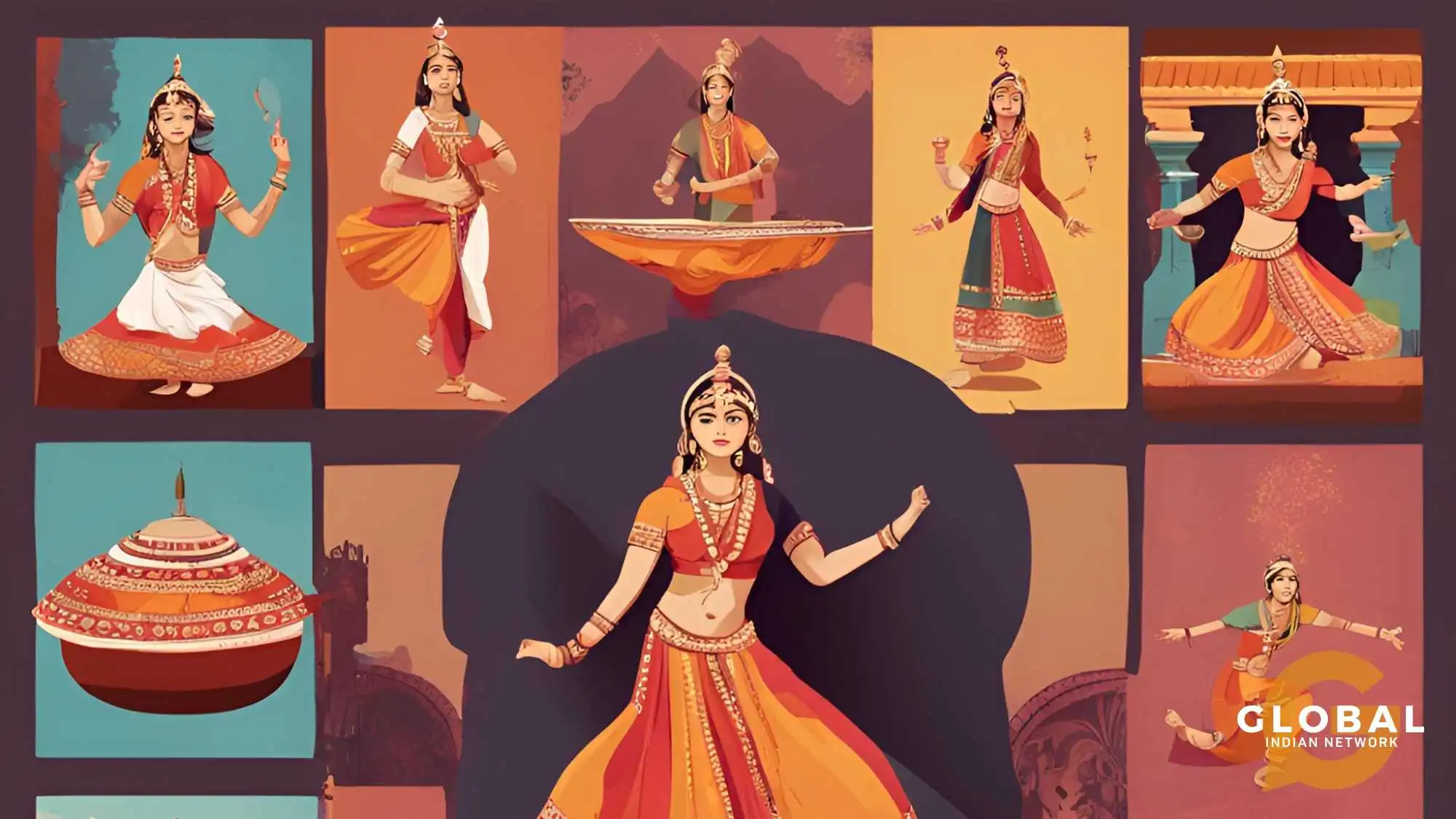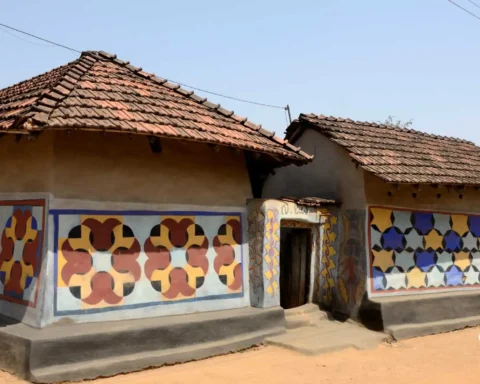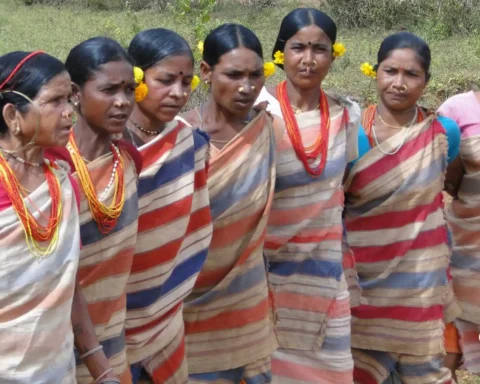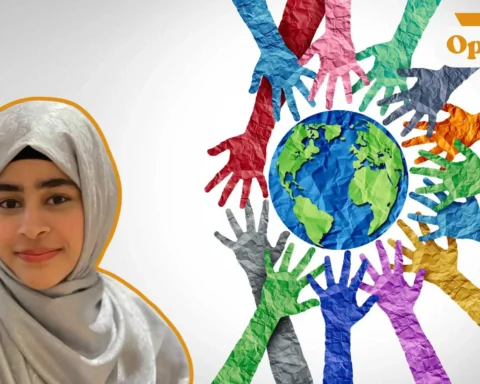Understanding Indian culture and diverse heritage encompasses a myriad of traditions, beliefs, and practices that have stood the test of time. From the colourful festivities that paint the nation's landscape to the profound philosophy that underpins everyday life, this exploration promises to unravel the essence of Indian culture. Whether you're a curious traveller, an avid learner, or someone seeking to broaden your horizons, this comprehensive guide invites you to uncover the very heart and soul of India's captivating cultural mosaic.
Discover the essence of Indian culture and immerse yourself in a world of traditions and timeless wisdom as we delve into the depths of India's cultural tapestry—a must-read for travellers, learners, and the culturally curious.
Table of Contents
Understanding Indian Culture
Densely woven into the fabric of human existence, Indian culture emerges as a rich tapestry of diverse social norms and intricate technologies. Its roots extend into the ethno-linguistic mosaic of India, yet its influence transcends geographical confines. This influence ripples across nations and cultures, its threads interwoven with those of countries whose histories have been interlaced with India's own through migration, colonization, or the gentle hand of influence. The heart of this cultural symphony beats strongly in South Asia and Southeast Asia, pulsating with shared rhythms.
Step into India's realm, and you'll be greeted by a kaleidoscope of languages, a mosaic of religions, and an array of dances, music, architectural marvels, flavoursome cuisines, and customs as diverse as the land itself. As you traverse the landscape, these facets morph and shift, each region imbued with its unique essence.
Indian culture, a tapestry often interwoven with multiple threads of heritage, bears the imprints of a history that stretches back through countless millennia. Its origins can be traced to the Indus Valley civilization and other ancient cultural oases.
It is adorned with the jewels of Indian religions, the symphony of mathematics, the philosophical tapestry, the palate-pleasing cuisine, the harmonious languages, the rhythmic dance forms, and the captivating world of cinema. Like a river flowing through diverse landscapes, these cultural currents have swept across the Indosphere, leaving an indelible mark on Greater India and resonating far beyond its borders.
With its opulent tapestry of cultural and natural treasures, India has rightfully earned the moniker "Land of Great Wonders and Diversities." The cultural heritage woven into its fabric has bestowed upon it a unique identity that captures the imagination and also for public displays. The essence of Indian culture resonates with the collective way of life embraced by its people. A captivating amalgamation of diverse segments, this culture is a testament to the fusion of traditions that have flourished for millennia.
Religious Culture
The cultural landscape of India is intricately woven with the threads of its native religions - Hinduism, Jainism, Buddhism, and Sikhism - all founded on the profound principles of dharma and karma. These Dharmic religions have left an indelible mark on Indian history, shaping its culture, beliefs, and way of life.
Being the birthplace of major religions and various other faiths, India proudly emerges as a cradle of unparalleled spiritual diversity. Collectively referred to as Indian religions, they stand alongside the Abrahamic traditions as significant world faiths.
Today, Hinduism and Buddhism hold the third and fourth positions, respectively, among the world's largest religions, with a combined following exceeding 2 billion. The tapestry of Indian society is coloured by the religious spectrum, with Hindus, Sikhs, Jains, and Buddhists constituting around 80-82% of the nation's populace.
India is one of the most diverse countries worldwide in terms of ethnicity and religion. It serves as a sanctuary for Hindu temples, deeply devoted societies, and vibrant cultures. Religion occupies a pivotal role in the lives of its people, contributing significantly to their identity and practices. While India is a secular nation with a predominantly Hindu populace, it is also home to a substantial Muslim community.
Although some states and regions showcase diversity, most Indian states and union territories are predominantly Hindu. Unfortunately, the rich tapestry of religious groups in India has sometimes been marred by turmoil and clashes between them. The country's history bears witness to religious tensions and conflicts between Hindus, Christians, Muslims, and Sikhs.
Various national-religious political parties have emerged amid these challenges, reflecting the intertwined nature of faith and politics. Despite government policies, prejudice against minority religious groups persists, often driven by efforts to control resources in specific regions.
According to the 2011 census, Hinduism is practiced by 79.8% of India's population, while Islam (14.2%), Christianity (2.3%), Sikhism (1.7%), Buddhism (0.7%), and Jainism (0.4%) constitute the other major religious affiliations in the country. This diversity defines India and continues to shape its ever-evolving cultural tapestry.
Indian Cultural Society
Rooted in millennia-old customs and beliefs, this society celebrates the fusion of various religions, languages, arts, and cuisines. It's a vibrant mosaic where festivals, rituals, and values play pivotal roles, reflecting the nation's unity in diversity. From the timeless wisdom of ancient scriptures to the modern expressions of art and technology, the Indian Cultural Society continues to evolve while cherishing its rich past.
Purity and Pollution
In Indian society, distinctions of status often find expression through the concepts of ritual purity and pollution. These intricate ideas manifest differently across various castes, religious communities, and geographic regions. Typically, high social standing aligns with purity, while low status aligns with pollution. Specific forms of purity are ingrained, stemming from birth itself; for example, a member of the revered Brahmin caste inherently carries greater purity compared to an individual born into a lower-status sweeper caste. Other forms of purity are transient—a Brahmin who has freshly bathed, for instance, holds greater ritual purity than one who hasn't cleansed themselves for a day.
Purity is intricately tied to ritual cleanliness, encompassing a range of practices such as daily bathing in running water, wearing freshly laundered clothing, adhering to caste-specific dietary norms, and refraining from physical contact with individuals of markedly lower societal standing or impure substances—such as bodily excretions from another adult. Engaging in the aftermath of death or acts of violence typically induces ritual pollution.
Social Interdependence
Individuals are born into a network of interconnected groups—families, clans, subcastes, castes, and religious communities—and this connection forms an integral part of their identity. The sense of being inseparable from these groups runs deep in the daily life of Indians, cultivating a fear of isolation without social support. Emotional interdependence is a norm within families, and economic activities are intricately woven into a social fabric. Kinship ties extend across villages and towns, creating connections where one can reliably find moral and practical assistance from relatives.
Social ties wield influence in every facet of life, and their absence can lead to setbacks. Rarely do individuals navigate tasks on their own. From a mother feeding her child to friends helping with water pots, assistance is ever-present. A student seeks support for college admission, and young people rely on their parents to arrange marriages. Even in facing death, the expectation is that relatives will oversee proper funeral rites, guiding the departed to the next stage of existence while reinforcing bonds among mourners.
This sense of interdependence reaches into the realm of theology. From birth, a child learns that their destiny is guided by divine forces, creating an ongoing relationship with powerful deities that must be upheld. Such a deeply rooted interdependence weaves a tapestry of unity across all aspects of Indian society and culture.
YOU MIGHT BE INTERESTED IN: Music, Culture, and Indianness: The Journey of Ila Arun
Caste System
Social inequality is a worldwide phenomenon, but the Indian caste system has created a particularly intricate framework of inequality. Castes have been a part of the daily life of Indian society for centuries, but they have faced severe criticism in modern times and are experiencing significant transformation.
Castes are organized groups identified by rank and name, with membership determined by birth. India's vibrant tapestry is woven from an intricate array of castes and subcastes, each comprising countless individuals. These large kinship-based groups play a fundamental role in the social structure of South Asia, offering a sense of belonging and support in various situations.
The etymology of the term "caste" can be traced back to the Portuguese word "casta," which encompasses notions of species, race, and kind. Numerous terms carry connotations that are sometimes encompassed by the English word "caste." However, delving into these terms - jati, varna, jat, samaj, and biradri - unveils a nuanced and intricate landscape beyond a singular translation. Varna refers to four major categories encompassing numerous castes, while the other terms denote specific castes and their subdivisions.
India's diverse castes are intricately intertwined with a spectrum of traditional professions, ranging from priests and potters to carpenters and butchers. The socio-economic landscape varies, with higher-ranking castes generally experiencing greater prosperity, unlike lower-ranking counterparts, who often grapple with poverty and social disadvantages.
The marginalized group formerly referred to as "Untouchables" is now known as "Scheduled Castes," or Dalits, and comprises about 16% of the population. Beyond the established castes, another layer of inclusion is "Scheduled Tribes." These groups are assimilated into the caste system to differing extents, adding dimension to the intricate tapestry of India's social structure.
In the past, Dalits faced extreme deference to high-status individuals and were barred from many places. Legislation passed during British rule and efforts led by figures like Mahatma Gandhi and B.R. Ambedkar, a Dalit leader, worked to eradicate such discrimination. Even though India's constitution, written mainly by Dr Ambedkar after independence in 1947, banned caste-based discrimination, Dalits still encounter significant challenges, especially in rural areas.
Each caste maintains strict standards regarding marriage, diet, dress, and occupation. Caste councils enforce these rules, and violations can result in fines or exclusion. While economic success and adopting high-caste behaviours can lead to upward mobility, falsely claiming a higher caste is easily exposed and offers no advancement.
Rural regions often see lower-caste individuals facing landlessness, unemployment, and bias. Urban areas, however, witness fading caste restrictions and increased acceptance of intercaste interactions and marriages. The connection between caste and occupation is rapidly weakening.
Recent years have brought about substantial changes in caste practices. In the present era, advocating for any caste's superiority or inferiority is socially and legally deemed unacceptable. This significant shift in perspective marks a turning point, as lower-caste groups are now asserting their political influence, signalling a transformative phase in India's societal landscape.
Language Diversity
India is famous for its cultural diversity and cultural heritage, and Indian languages are just as exciting and intricate. From the high mountains to the warm beaches, India has many different languages and ways of speaking, each with its writing system, sounds, and cultural meanings.
India has 22 official languages that the government recognizes. These include Hindi, Bengali, Telugu, Marathi, Tamil, Urdu, Gujarati, Malayalam, Kannada, Oriya, Punjabi, Assamese, and Maithili. In each state, there's usually a primary language that people use, along with Hindi and English.
Hindi holds the position of being the official Indian language of the central government. It is expressed through the Devanagari script. But India's language picture is even bigger than that. People all over the country speak hundreds of local languages and ways of talking, which makes India's culture diverse and rich.
English plays a vital role in India, influenced by its colonial history, and it remains an important associate official language. It is widely spoken and understood in cities, and most schools and colleges use it for teaching. English is readily noticeable on road signs, public notices, and restaurant menus, particularly in locations often frequented by tourists.
Moreover, the surge of digital technology has made English significant in our daily interactions. Social media, digital news platforms, and the entertainment industry work together to promote the widespread embrace of English, bringing India's diverse population together on a shared platform.
It's common for Indians to seamlessly shift between different languages, sometimes even within a single conversation. This linguistic phenomenon, called code-switching, underscores India's remarkable ability to embrace linguistic diversity and effortlessly adapt to various languages.
Greeting
The foundation of Indian greetings lies in the Añjali Mudrā, which involves gestures like Pranāma and Puja. Common greetings include:
- Namaste (Hindi, Sanskrit, and Kannada)
- Nômôskar (Odia)
- Khulumkha (Tripuri)
- Namaskar (Marathi)
- Namaskara (Kannada and Sanskrit)
- Paranaam (Bhojpuri)
- Namaskaram (Telugu and Malayalam)
- Vanakkam (Tamil)
- Nômôshkar (Bengali)
- Nomoskar (Assamese)
- Aadab (Urdu)
- Sat Shri Akal (Punjabi)
These greetings are used when meeting someone for displays of affection and also as a form of farewell when parting. While both Namaskar and Namaste convey profound respect, Namaskar is commonly perceived as slightly more formal. These greetings are commonly employed by Hindus, Jains, and Buddhists in India and Nepal, and their usage extends beyond the Indian subcontinent.
The term "Namaste" finds its roots in Sanskrit, with "Namah" signifying to bow, show respect, and offer respectful salutations, while "te" translates to "to you." When interpreted literally, it means "I bow to you." Within Hinduism, it holds the profound connotation of acknowledging the divine presence within the other person, translating to "I bow to the divine in you" as cultural heritage.
In the context of most Indian households, young individuals are taught to honour their elders by reverently bowing as a way to seek their blessings. This beautiful tradition is known as "Pranāma," reflecting paying homage and expressing respect.
The Art of Living
The art of living encompasses a tradition, cultures, and practices that have been passed down through generations. From vibrant festivals that burst with colour and music to intricate forms of dance and crafts, art is woven into everyday life. It reflects the deep spirituality, history, and creativity that thrive in this ancient land.
Family Ideals
The core tenets of Indian cultural life are instilled within the nurturing embrace of the family. The joint family structure holds immense significance, ideally encompassing multiple generations residing together, sharing daily activities, meals, and spiritual practices. Within these extended families, you will discover men connected through their paternal lineage alongside their spouses, children, and unmarried daughters. While a wife generally resides with her husband's relatives, she maintains crucial ties with her birth family.
While India experiences rapid modernization, the traditional joint household remains a prevalent social arrangement for numerous Indians, retaining its influence in both concept and reality.
Larger family units demonstrate adaptability and are well-suited to contemporary Indian lifestyles, especially for the majority involved in agricultural pursuits. Like other primarily agrarian societies, cooperative kinship provides a safety net of economic support. The joint family structure also thrives in urban settings, where kin connections often play a pivotal role in securing employment opportunities or financial aid.
The timeless concept of the joint family still holds significance in Indian homes, but modern living arrangements display considerable diversity. While numerous Indians now reside in nuclear families – consisting of a couple and their unmarried children – they remain part of robust networks of supportive kinship bonds. Frequently, groups of relatives live close by, readily fulfilling their kinship duties.
As joint families expand, they often splinter into smaller units that eventually develop into fresh joint families, maintaining an ongoing cycle. Certain family members might relocate in pursuit of job prospects, typically sending financial support back to the larger family.
Family Authority and Harmony
In the Indian household, distinct lines of hierarchy and authority are established and upheld by guiding principles of behaviour that foster family unity. All family members are raised to respect the authority of those above them in the hierarchy. In the family structure, the oldest male takes on the position of the family leader. Meanwhile, his wife supervises her daughters-in-law, with the youngest having the lowest level of authority. In return, those in positions of authority acknowledge their duty to fulfil the needs of other family members.
Family loyalty is firmly ingrained as a fundamental principle, underscoring togetherness within the family, particularly in contrast to those beyond the circle of kinship. Inside the household, interactions between partners and among parents and their children are kept in balance to promote a broader sense of family harmony. For instance, public demonstrations of affection between husbands and wives are frequently deemed unsuitable.
In customary heritage, males of yore predominantly presided over pivotal familial assets such as estates or enterprises, notably ensconced within the echelons of privilege. Following age-old Hindu jurisprudence, the feminine populace remained bereft of the entitlement to inherit landed properties, instead tethered to their male kin, who commanded dominion over terra firma and edifices.
According to prevailing Islamic precedent, the fairer sex is endowed with the potential to lay claim upon landed properties, albeit often relegated to more diminutive shares in contrast to their male counterparts. In the contemporary lexicon of law, all Indian women are now vested with the prerogative to partake in the inheritance of realty. Throughout sundry epochs, opulent lineages have granted women the privilege to amass opulence manifested in heavenly gems.
Relationship and Marriage
Across the vast expanse of India, the tapestry of arranged unions weaves a rich mosaic, yet the threads of expectations and traditions are spun differently, a dance orchestrated by geography and belief. The rite of matrimony, meticulously choreographed, unfolds through the hands of matchmakers, parents, or esteemed confidants, where the veils of yesteryears, shrouding the identity of future companions, have yielded to a contemporary tableau wherein the couple's voices resound in harmonious assent before the nuptial rites.
The labyrinthine pathways of arranged unions meander through the caste tapestry, a symphony where endogamy orchestrates the chords. An enduring ritual reserved for brethren within the same caste or, sometimes, the sanctums of shared faith. An intricate mosaic woven by the hands of kin and kindred spirits, a symposium of connections anchored within the embrace of a wider community.
Within this schema, the lattice of matrimony weaves within the confines of caste, each thread a carefully selected fibre, yet shying away from the intimacy of subcaste unions. This union, an interplay of lineage and legacy, affords parents the agency to sculpt the destiny of their progeny while upholding the edifice of community and continuity. The arranged unions and caste concordance verses inscribe a narrative of lineage and locale, steadfast pillars that endure.
Beyond the hallowed union of shared surnames, the panorama of affection unfurls, where the heart's compass guides the steps of "love marriages," a mélange of hearts united against tradition's tide. These unions, a rising tide against the conventional currents, extend an olive branch to transcending caste confines. Yet, the familial resonance reverberates, for the council of kin is rarely sidestepped.
Across India's sprawling canvas, the vignettes of weddings unfurl, poised at the crossroads of antiquity and modernity. Amidst the verdant landscapes of villages, regardless of the urban or rural tether, the ceremonies embrace ancestral abodes, their doorways adorned for grand spectacles of unions and kin. A multi-day saga of rituals and reverie, it ebbs and flows, as diverse as the terrain it unfolds upon, a homage to region and reverence.
+Each sojourn into the marital symphony, its notes attuned to the land and the divine, for practices dance to the rhythms of region and creed. The conjugal tapestry, where the mundane meets the mystical, etches itself into the collective memory, a witness to the ceaseless march of time.
Indian Cuisine
Transitioning from the realm of faith to the realm of flavours unveils a landscape where the tapestry of diversity continues to unfold, extending its tendrils into the culinary domain of India. The country's intricate interplay of religions, languages, and customs has given birth to a tapestry of gastronomic offerings, each weaving a distinct tapestry of taste and culinary craftsmanship that mirrors the nation's wealthy cultural legacy.
Indian cuisine transcends the confines of mere curry! A tapestry of taste unfolds across the land, where each state, and at times even divergent corners of a singular state, casts its culinary symphony onto the palate. From the opulent, ghee-infused feasts of Punjab to the piquant marvels of Andhra Pradesh, from the coconut-kissed platters of Kerala to the saccharine symphonies of West Bengal, the cornucopia of choices knows no bounds.
North India's culinary panorama unfurls the regal banners of tandoori and korma, accompanied by the delectable companionship of naan and paratha and an array of robust lentil soups, christened as dal. And who could neglect the venerable biryani, an aromatic ode where spices and meat waltz upon the canvas of fragrant rice?
Southern Indian culinary tapestry, in contrast, wields rice, lentils, and coconut as its signature brushstrokes. Dosa, a lacy, crisp creation, idli, the ethereal steamed rice cake, sambhar, the zesty lentil elixir, and coconut chutney all stand sentinel as staples of this realm.
The eastern provinces, particularly the fertile plains of Bengal, herald their maritime prowess and confectionery finesse. Embark upon a journey of taste with the ethereal Rasgulla, born from milk and ambrosia, the piscine symphony of fish curry, and the whimsical dance of puffed rice.
The western frontier unfolds an atlas of tastes – from the saccharine havens of Gujarat's vegetarian delights to the fiery maritime adventures of Maharashtra and the languid haunts of Goa.
Notwithstanding the regional symphony, the harmonious chorus of Indian cuisine echoes with a few universal notes. The orchestration of diverse spices and herbs – the golden allure of turmeric, the verdant whisper of coriander, the rustic cadence of cumin, and the intoxicating serenade of garam masala – bind together to bestow Indian dishes with their mellifluous identity.
For the wellness-devotees and vegan sojourners, the Indian culinary ensemble unfurls an abundant spread of options. India, predominantly a haven for herbivores, lays forth a plethora of plant-based epiphanies. Yet, a note of caution beckons the uninitiated traveller who dares tread the path of spice, while the flavour is omnipresent, spice too may rear its fervent head.
Lingering upon the epicurean landscape, we encounter a quaint tradition that intertwines the tactile with the gustatory. The Indian custom of savouring meals with one's hands, an age-old practice, remains alive and well. Amidst the widespread availability of utensils, the native populace often delights in this sensory communion, claiming that this tactile connection augments both nourishment and connection to the repast.
YOU MIGHT BE INTERESTED IN: Navigating Cultural Identity and Indian Cuisine with Aparna Soni
Clothing and Attire
The rich tapestry of traditional Indian clothing unfurls in a symphony of diversity, mirroring the hues of local culture, climate, and time-honoured practices. Amidst this kaleidoscope, certain garments have transcended regional bounds, earning acclaim on the national stage.
For women, the resplendent sari takes centre stage. An elegant expanse of unstitched fabric spanning five to nine yards, it elegantly drapes the form in various styles, each a silent ode to a specific locale. The 'Nivi' style, an Andhra Pradesh jewel, has cascaded across the nation's silhouette.
The salwar kameez reigns supreme in the pantheon of women's couture, known colloquially as the Punjabi suit. This ensemble pairs breezy trousers (salwar) with a regal tunic top (kameez). A fraternal adaptation christened the kurta-pajama finds favor among men.
In southern realms, women sway in lehengas or ghagras, swathed in the poetry of long, flowing skirts coupled with resplendent blouses. Conversely, men find sartorial companionship in the dhotis or mundus, dressing themselves in unstitched fabric, anointed by tradition.
The northern male narrative, especially in a rustic embrace, finds solace in the simplicity of a kurta-pajama duet. A kurta, a loose shirt descending with grace to the knees, accompanied by its counterpart – the pyjama, an emblem of comfort.
As the wheels of urbanization and the gusts of Western influence sweep the land, the garmentscape metamorphoses. Urban sprawls and cityscapes echo with the resonance of jeans, t-shirts, dresses, and business suits.
Yet, the traditional ensemble maintains its presence during festivals, weddings, and sacred rites. Amidst this dance of modernity, the allure of indigenous raiments remains unwavering. The kaleidoscope of hues, the labyrinth of patterns, and the artistry woven into each thread are a testament to the captivating spell cast by Indian attire. To don these garments is to invite an exhilarating chapter into your Indian odyssey, where tradition and innovation entwine in a graceful pas de deux.
Perception of Indian Culture
India, a mosaic of diversity, has acted as a muse for myriad wordsmiths who sought to capture its essence upon the parchment of literature. These compositions, a tapestry of perceptions, unveil an intricate and paradoxical culture. A veritable kaleidoscope of ethnicity and faith lies within its borders, rendering India a global exemplar of pluralism. Yet, the concept of "Indian culture" stands as an enigmatic labyrinth, a confluence of myriad currents.
The Indian populace, an intricate lattice of threads interwoven by ethnicity, faith, caste, language, and locale, begets a reality steeped in intricacy, where the notion of "Indianness" remains a puzzle of the most profound order. The very fabric of Indian identity, a canvas where multifarious hues converge, demands a deconstruction of assumptions and a reflection upon the very essence of "Indian".
Amidst this splendid chaos, a nuanced Indian identity emerges, like a phoenix from the pyre, sculpted by the crucible of internal dynamics. The contours of this identity are shaped by sturdy foundations – a formidable Constitution, a democratic franchise reaching every adult heart, a supple federal architecture, and a secular ethos within education's embrace.
A symphony of history, with its crescendos and lulls, has also left an indelible imprint upon the canvas of Indian culture. The march to sovereignty, the tumultuous Partition, and the battlefield clashes with Pakistan are epochal notes in the melodious saga.
Hindu Sanskriti Ankh, a revered tome hailing from the northern domains, unfurls a journey through the corridors of antiquity, spotlighting the Bharatiya Sanskriti, the very soul of India's culture. Its pages echo the resonance of ages past, a testament to the sublime inheritance.
Thus, in a structured choreography of thought, India's mosaic unfurls its variegated hues – a literary canvas painted with words, capturing the vibrant complexity of a nation both bewildering and beguiling.
Conclusion
In conclusion, understanding Indian culture is akin to embarking on a mesmerizing journey through time and diversity. It is a voyage that leads us through the corridors of history, the pages of literature, and the pulse of contemporary existence. The myriad facets of Indian cultures, shaped by a symphony of influences, faiths, traditions, and languages, converge to create a narrative that is at once complex, vibrant, and ever-evolving.
FAQs
How do you speak about Indian culture?
The core of Indian culture lies in their values and virtues.
What are the roots of Indian culture?
The roots of Indian culture can very well be traced back to their remote religious traditions.
What is the most important thing about Indian culture?
Indian culture is all about family.
What do you learn from culture?
Being culturally aware helps you acknowledge your heritage and worldviews.










